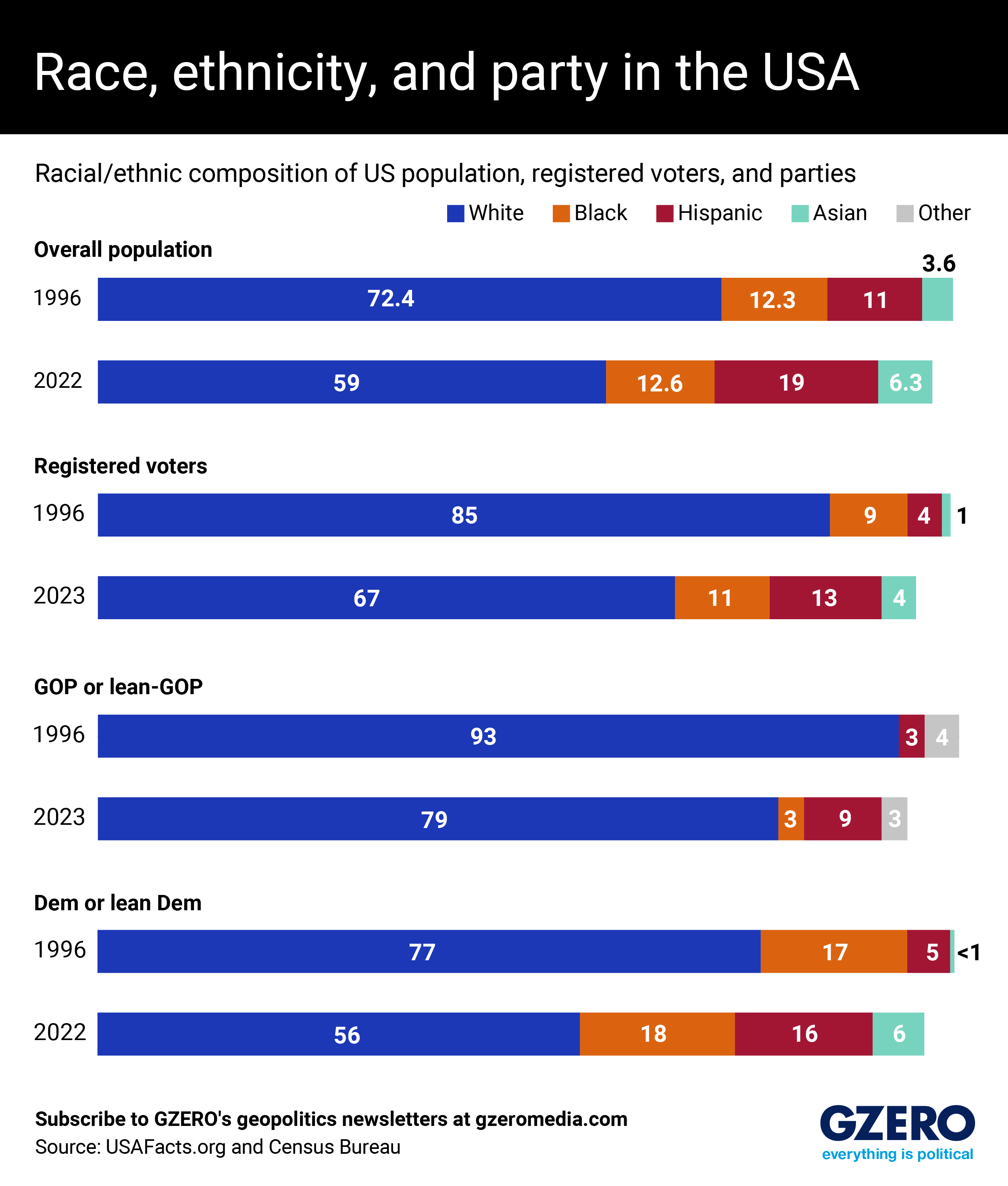October 03, 2024
America, and Americans, look different today than they did 30 years ago. The country’s population has grown more ethnically diverse, and so too have registered voters. In 1996, the country was 72% white. By 2023, that had fallen to 59%, largely as a result of strong growth in the Hispanic and Asian populations.
The two main political parties have also gotten more diverse, but one has done so much faster than the other. In 1996, 77% of Democrats and 93% of Republicans were white. Since then, white representation in the Democratic party has fallen more than 20 points. In the GOP, it fell 14 points.
Here’s a look at how the racial and ethnic composition of the US population and parties have changed over the past three decades.
Want more? There’s only one demographic subgroup in America in which a majority considers diversity to be a “threat.” Can you guess which it is? See Alex Kliment’s recent column on that here.More For You
Of all the threats to the world, what are the top 10 most urgent global risks for 2026? On Monday, January 5, at 12 pm ET, join us for a livestream discussion with Ian Bremmer and global experts to discuss the Top Risks of 2025 report from Eurasia Group. This report will mark twenty years of Ian Bremmer’s annual forecast of the political risks that are most likely to play out over the year. Event link: gzeromedia.com/toprisks
Most Popular
- YouTube
Wikipedia cofounder Jimmy Wales explains why a specific page titled “The Gaza Genocide” risks undermining trust with users.
- YouTube
In his latest Quick Take, Ian Bremmer explains a major shift in the Ukraine war: Europe, not the United States, is now driving the strategy.
Chief Superintendent of the police force's National Security Department Steve Li Kwai-wah speaks at the West Kowloon Magistrates' Courts building after the verdict in the national security collusion trial of Jimmy Lai, founder of the now-defunct pro-democracy newspaper Apple Daily, in Hong Kong, China, on December 15, 2025.
REUTERS/Lam Yik
© 2025 GZERO Media. All Rights Reserved | A Eurasia Group media company.
